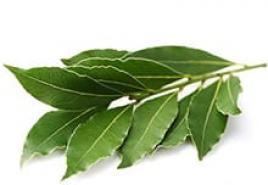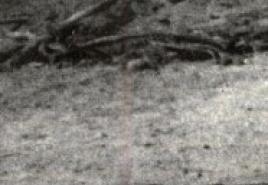Limestone stone paper is a great alternative to cutting down trees. Japan started making paper from stone instead of wood Stone Paper Factory
In early 1990, a Taiwanese company developed a technology for making paper from stone to save trees and patented it.
The paper is made from waste from the mining and processing of various rocks and is durable and water-resistant.
Executive Director of the company “Mongol Chuluun Tsaas”, B. Dorzhsuren says that this technology has already been successfully used in more than 40 countries around the world.
B. Dorzhsuren
Paper production is a necessary business, but it has a detrimental effect on the environment. Trees are destroyed, water is polluted, and a large number of energy. Considering that preserving the green cover of the planet is one of most important tasks humanity, alternative methods of paper production are becoming very relevant. That's why this technology aroused great interest among Mongolian entrepreneurs..
The basis for such paper is calcium carbonate. Note that it is also found in regular paper, but in smaller quantities. Calcium carbonate is obtained from minerals that are most often discarded during the extraction of raw materials used in the construction industry. That is, waste from the extraction of limestone, marble, and so on is used to produce new paper. The rock is crushed until it turns into fine chalk dust. Then non-toxic synthetic resin HDPE is added to it - this is high-strength polyethylene to bind dust particles. The resulting mass contains 80% calcium carbonate and 20% HDPE. The output is snow-white, smooth and soft paper that is resistant to water and abrasion.

This paper does not contain acids or chlorine, it is completely safe for environment. This paper is grease-resistant and almost does not tear.
Its production is environmentally friendly because calcium carbonate is taken from mining waste, and this resource is renewed much more quickly. Since the paper is made from stone, it is not biodegradable. When exposed to ultraviolet light (such as the sun) and moisture, high-density polyethylene breaks down in about a year, returning calcium carbonate to a solid form. For example, eggshells are 95% calcium carbonate and decompose in the same way. In addition, the process of producing stone or, as it is also called - synetic, limestone, mineral paper - does not require cutting down trees.
According to B. Dorjsuren, All the raw materials necessary for production are located in the Erdenet Mining and Processing Plant. For years, people have complained about white dust near the Erdenet mining and processing plant, threatening the health of residents of the area and the ecosystem of the area. The problem of dust generated during the processing of rocks has been repeatedly discussed in the press.

The new company is able to solve this problem in the best possible way and with great benefits for the environment.
There are several stone paper brands currently available, such as FiberStone, Terraskin and Rockstock. Soon the Mongolian brand will be on a par with them" Mongol Chuluun Tsaas", which means "Mongolian stone paper" or "Mongolian stone paper".

Note that to produce 1 ton of clean paper, it takes 20 trees, 38,000 kJ of energy, produces 73 cubic meters of contaminated water, uses bleaches, and contains only 20-30% calcium carbonate (rock).
Producing 1 ton of recycled paper requires 4 trees, 23,000 kJ of energy, creates 41 cubic meters of contaminated water, uses bleaches, and contains 20-30% calcium carbonate (rock).
Producing 1 ton of paper from stone does not require wood, creates absolutely no dirty water and uses half the energy required to make recycled paper or a third of the energy to produce 1 ton of clean paper. Mineral paper production does not use bleaching reagents and does not pollute the atmosphere.
The most important thing is that the trees remain unharmed. This means that the production of such paper can save millions of hectares of forest.
Stone paper is suitable for all types of printing: you can print everything on it that you can print on regular paper.
The OGAMI brand was created for the development and production of everyday items. OGAMI notebooks and notebooks have their own original style, the highest level of performance thanks to innovative materials, finishing and technological solutions. OGAMI products are presented in the most exclusive stationery and book stores, designer boutiques and museums.
OGAMI is REPAP - paper made 100% from stone
REPAP is paper made 100% from stone! The word "Repap" itself is "Paper" written backwards. This innovative, revolutionary paper consists of calcium carbonate (stone) combined with non-toxic resins. As a result, this provides natural material white
, which provides an amazing, incomparable experience of very smooth, clear, almost airy writing. Calcium carbonate is a natural by-product of water and limestone (one of the most common minerals already widely used in many industries).
- Some facts about stone paper IN production process
- no wood or cellulose is used
- No water is used in the production process
- The color of the raw material is naturally white, so production does not require chemical bleaching and the use of acids, so there is no toxic waste
- Stone paper can be recycled
- Stone paper is great for archival document storage Stone paper is environmentally friendly - the decomposition period is natural environment
- — 14-18 months.
- 100% waterproof (and ideal for writing with fountain pens!)
- Very resistant to tearing, stretching and weathering. Many times more durable than regular paper
- Has a very soft, silky surface
- Provides an amazing writing experience - crisp, smooth writing with gel, ballpoint and fountain pens, rollerballs, markers and pencils
- And you can still get the satisfaction of rock paper by tearing out a piece of paper, crumpling it up like regular paper, and throwing it in the trash!
- In addition, REPAP has the advantage over traditional paper in that it is resistant to yellowing and insect damage You can trust REPAP to protect all your important documents
Global paper production is growing every year, and along with it, the number of trees cut down on the planet is also growing. But it turns out that to produce paper it is not necessary to destroy hectares of forest and all its inhabitants, because this thing necessary for our civilization can be made from limestone and polyethylene.
Limestone papermaking technology was first developed in Taiwan about 20 years ago. Paper made from this common and fairly cheap material was strong and durable, and its characteristics were in no way inferior to traditional paper. The technology for its production was patented in several dozen countries and today the production of stone paper, as its manufacturers call it, is carried out in several countries, including Taiwan and Japan.

Alternative paper consists of 80% crushed limestone (CaCO3), with the remaining 20% being polyethylene, which acts as a binder. Apart from significant savings in wood (and to obtain 1 ton of paper, about 20-25 trees are required to be cut down), the stone paper production technology has almost no impact on aquatic ecosystems, which cannot be said about pulp and paper mills. The fact is that almost no water is used in the production of stone paper, while about 100 tons of water are required to produce 1 ton of paper.

Stone paper is denser and stronger, and has increased resistance to moisture and pollutants. This type of paper is great for making bags, magazine covers and notepads, business cards, postcards, tags, booklets and other paper products.

Today, the production of stone paper is already carried out in several countries, but Japan is the recognized leader in this area. And this, perhaps, is not surprising, because it is in Japan that they pay special attention to the environment and treat nature with care.
Nowadays one of the most hot topics for conversations is the preservation of the ecological situation on the planet. People are constantly building factories, various machines and mechanisms that, emitting harmful substances, slowly but surely pollute the environment. For example, millions of cars driving around the world daily emit enormous amounts of gases harmful to the atmosphere. For the same reason, in large (especially industrial, where, in addition to cars, there are many factories and factories) cities it is so difficult to breathe.
But not everything is as bad as it seems at first glance. After all, nature itself is designed in such a way that it is capable of self-cleaning after our activities. And the main “army” in the fight against air pollution is plants. Grass, flowers, shrubs and, of course, mighty trees are our protectors, who allow us to live on our planet. Without them, the air would become dirty, unsuitable for existence, and the Earth would quickly turn into something like Mars.
The scary thing is that humanity is making very little effort to protect forests. Trees are ruthlessly cut down for various needs. They are used to make furniture, matches, Construction Materials, firewood for stoves and fireplaces, etc. But in our age of new technologies, in almost any area of production you can find a replacement for wood, which will bring invaluable benefits to the nature of our planet. Yes, it turns out that even paper today can be made not only from wood, but also from other common materials.
Production of stone paper and products made from it
To produce such a popular material as paper, it is not necessary to use wood. After all, it can even be made from stone. New technology for the production of paper sheets and entire Repap products from an Italian manufacturer unusual accessories Ogami can create a real revolution in the production of books, magazines, notebooks, notepads and other paper products. After all, all this can be made without the use of wood at all.
Repap paper consists of 80% calcium carbonate and 20% non-toxic resin with some polymers. The unusual production process looks something like this. Calcium carbonate is the main material that makes up limestone, a widespread mineral of which natural reserves are enormous. The mineral is mined, processed and ground to a powder. Next, special resins and polymers are added to it. From the resulting mixture, through certain technological operations, Repap stone paper is obtained. In appearance and texture, it is no different from traditional wood paper. It is just as white, you can write on it, draw on it, you can make cranes or airplanes out of it, you can wrap anything in it. And after use, you can crumple it and throw it away like regular paper. You can write and draw on this paper with ordinary ballpoint pens, felt-tip pens, pencils, paints, etc.
In addition, stone paper has a certain set of advantages that make its production even more promising. Firstly, such products are more durable and have some moisture-proof properties, which makes them more convenient for use, for example, in outdoor conditions. And in terms of storage and transportation there will be fewer problems. Secondly, there is no need to cut down trees. This, in turn, will have a beneficial effect on the health of our planet, which is good news. Thirdly, no harmful chemicals are used in the production of stone paper. chemical substances, which are commonly used to bleach sheets in the production of wood-based paper. Fourthly, limestone is a very common mineral, which can have a positive effect on the cost of products made from it.
Stone paper planners available today
Repap technology is not something elusive and unattainable for the average buyer. After all, today we all have a chance to purchase and try out stone paper notebooks from the Ogami company. Their cost is about 500 rubles in our money. Expensive? Yes, it is relatively expensive, because for about the same amount you can buy the legendary Moleskine. But the technology for making stone notebooks is still young. Time will pass, and products made from limestone paper will become as accessible as the “wooden” notepads we are used to. At least I want to believe so. In the meantime, we can only wait and hope that new technology will find its application in modern world and will make our planet at least a little cleaner.
Ecology of consumption. Paper production is a necessary business, but it has a detrimental effect on the environment. Trees are destroyed, water is polluted, and large amounts of energy are consumed.
Paper production is a necessary business, but it has a detrimental effect on the environment. Trees are destroyed, water is polluted, and large amounts of energy are consumed. In light of measures to preserve the green cover of the planet, alternative methods of obtaining paper are becoming very relevant. Therefore, manufacturers became interested in making eco-paper from stone.
The basis of environmental paper is calcium carbonate. Note that it is also found in regular paper, but in smaller quantities. Calcium carbonate is obtained from minerals that are most often discarded during the extraction of raw materials used in the construction industry. That is, to produce new paper, waste from limestone, marble, and so on is used. The rock is ground until a fine chalk dust is obtained. Non-toxic synthetic resin HDPE is added to it - this is high-density polyethylene - to bind dust particles. This substance contains 80% calcium carbonate and 20% HDPE. The output is snow-white, smooth and soft paper, resistant to water and abrasion. It contains no acids or chlorine and is completely safe for the environment. This paper is grease-resistant and almost does not tear. It is suitable for outdoor use, especially if supplemented with UV protection.
Note that it takes about 20 trees to produce a ton of regular paper. In the process of its production, 38,000 kJ of energy is consumed, and 73 cubic meters of water are polluted. In addition, bleaches are used, this also happens when producing recycled paper. For it, however, fewer trees are cut down - four per ton of finished material. Recycled paper production consumes approximately 23,000 kJ of energy and pollutes approximately 41 cubic meters of water. Both virgin and recycled paper contain up to 30% calcium carbonate. Making a ton of paper from stone requires no trees, uses half the energy needed to make recycled paper, and does not pollute water. This paper does not need bleaching. Mineral paper is environmentally friendly in every way. It can be recycled with plastic and regular paper. Under influence sun rays The HDPE resin degrades within a year and the calcium carbonate returns to its original solid form, which is natural to the environment. If mineral paper is destroyed in waste recycling factories, it will not release toxic substances into the atmosphere when burned.
Manufacturers will have no shortage of raw materials for mineral paper, since calcium carbonate makes up about 70% of the total minerals on Earth. Currently, there are several stone paper brands such as FiberStone, Terraskin and Rockstock.. published







